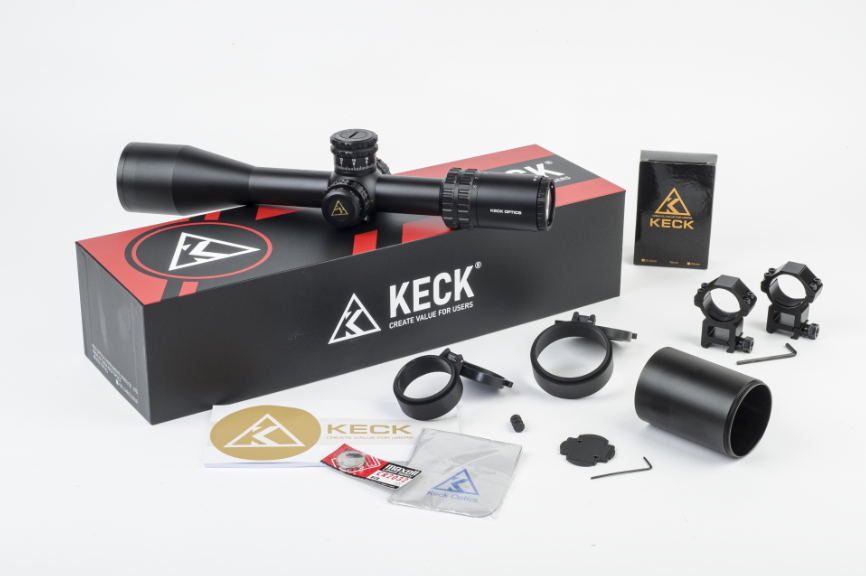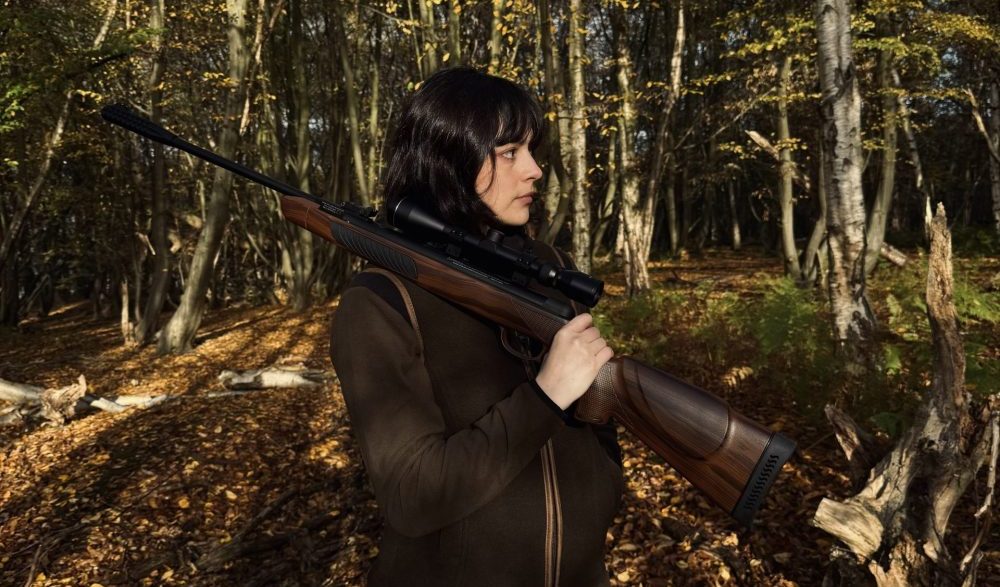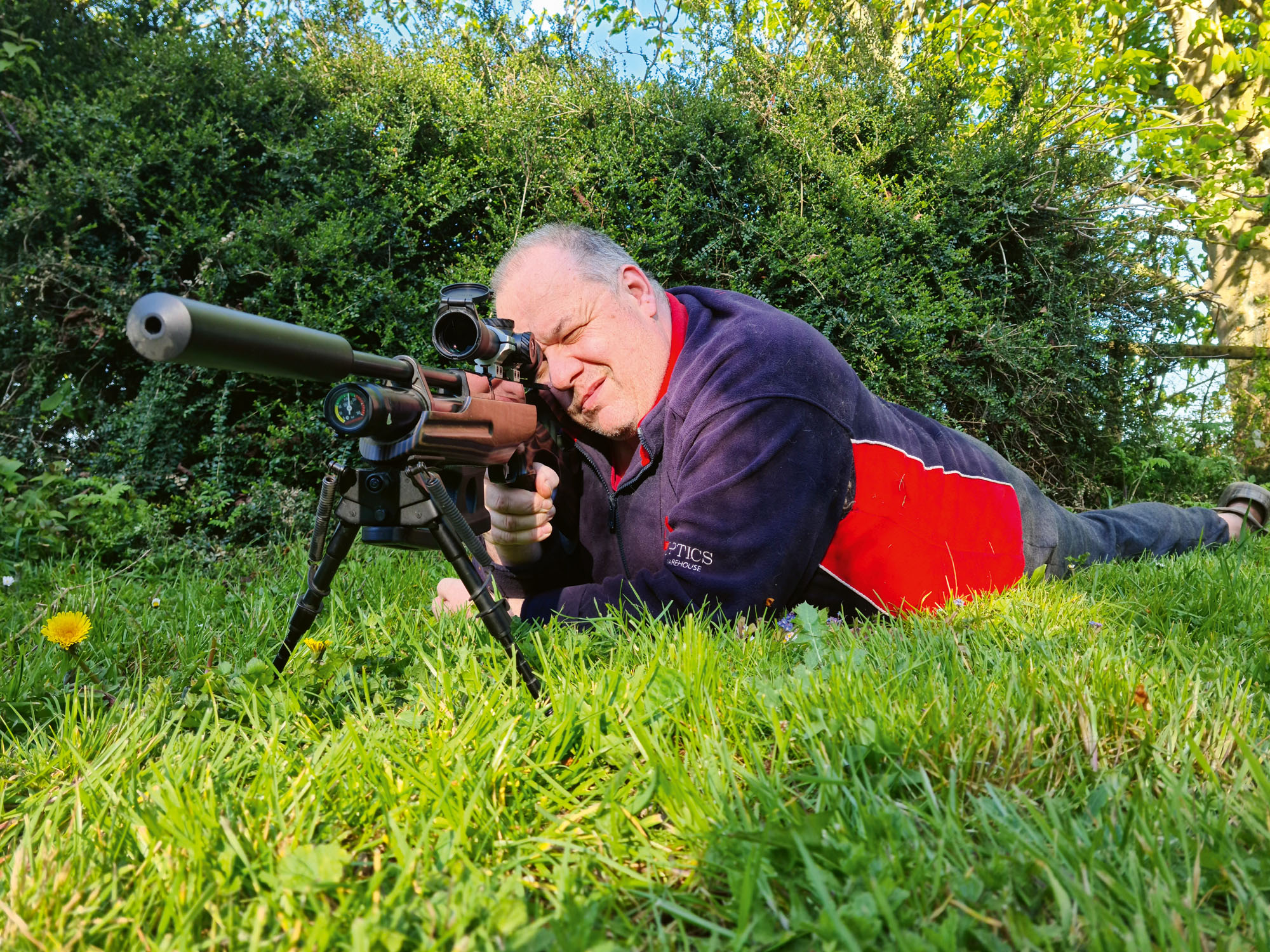Features, interviews and advice
Tips for rabbit shooting with an air rifle
If there’s one quarry that truly embodies the essence of traditional British airgun hunting, it’s the rabbit. They’re plentiful, alert and perfectly suited to the pest control skills of the thoughtful airgunner
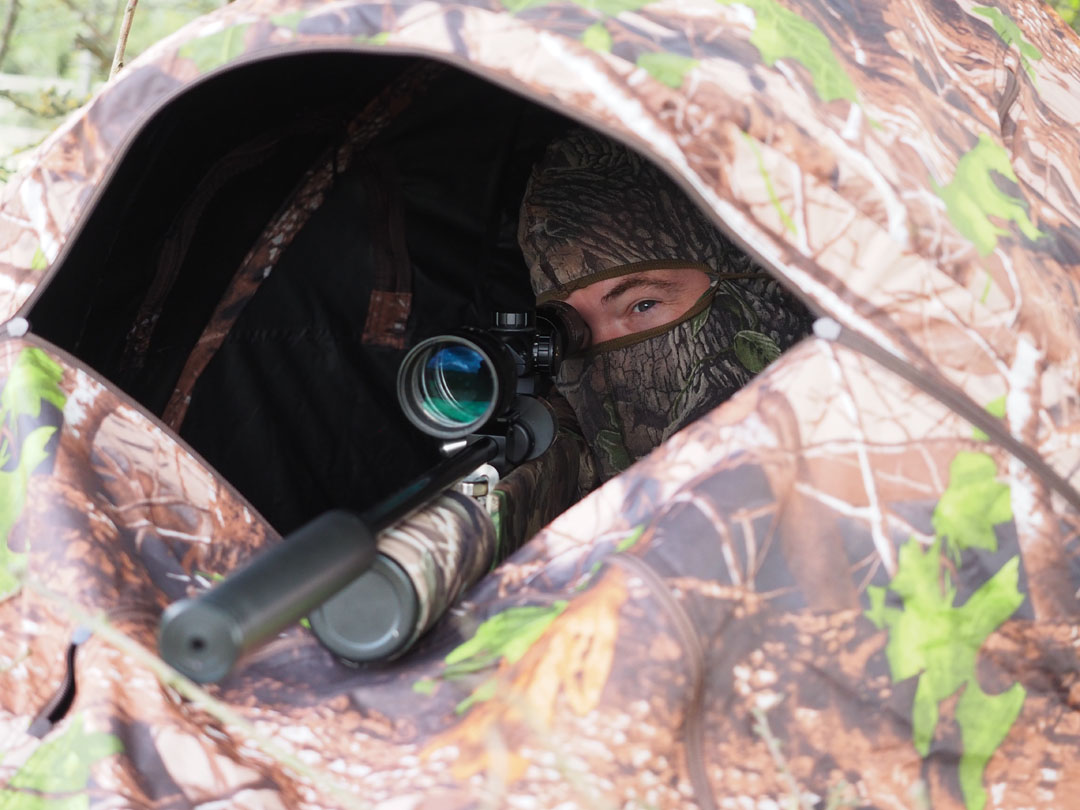
If there’s one quarry that truly embodies the essence of traditional British airgun hunting, it’s the rabbit. They’re plentiful, alert and perfectly suited to the skills of the thoughtful airgunner.
Whether you’re stalking through dew-soaked fields at dawn, lying prone beside a hedge, waiting patiently in a hide or working under the stars with a lamp or night vision, rabbit shooting offers everything that makes this pastime so deeply rewarding. It’s not just about shooting, it’s about understanding your quarry, reading the land and applying patience, precision and respect in equal measure.
Do you need permission to shoot rabbits?
Before even picking up a rifle, it’s essential to know your permissions. Permissions are the backbone of ethical airgun hunting. Every landowner will have their own rules, and it’s your responsibility to respect them.
Always clarify exactly where you’re allowed to shoot, what areas are off limits and whether lamping or night shooting is permitted. Never assume. Using lamps or night vision without clear permission could cost you access to good land and damage the reputation of the sport.
Once permission is granted, take time to walk the ground in daylight. Learn the layout, note the safe backstops, find the burrows and understand how the land lies. The better you know your permission, the more confidently and safely you’ll be able to hunt.
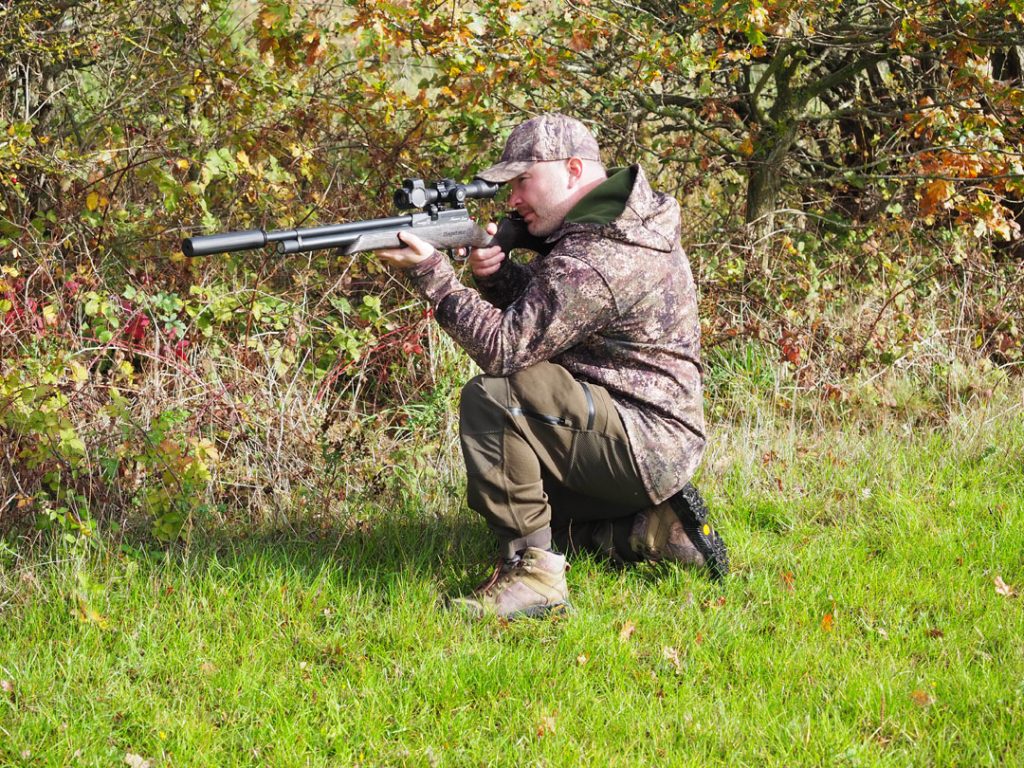
What is the best time of day to shoot rabbits?
Rabbits are crepuscular, meaning they’re most active at dawn and dusk. They feed along field edges and grassy banks, retreating to their warrens at the first sign of danger. Their senses are incredibly sharp, their eyes are tuned to detect the slightest movement, their hearing can pick up the rustle of grass, and their sense of smell is superb.
Early mornings are often the most productive for the hunter, especially when there’s dew on the grass to soften your footsteps. Those quiet, still moments before sunrise are magical, and as the first light creeps across the fields, you’ll often see rabbits emerging to feed.
Dusk is equally rewarding as they come out again to graze before nightfall. On warm summer evenings they may linger longer in the open, while in winter their feeding spells are shorter but more predictable.
Once darkness falls, lamping or night vision can open up a whole new world of opportunity. Under the cover of darkness, rabbits will often feed further from cover and appear in places you’d never see them during the day. A good lamp or night-vision setup allows you to make the most of this, but safety and legality are paramount.
Always ensure night work is permitted on your permission and take extra care with shot placement and backstops. Hunting at night demands a clear head and a calm approach, but the rewards can be excellent.
Why is good fieldcraft important when rabbit shooting?
Success with rabbits ultimately comes down to one thing: fieldcraft. Fieldcraft is the invisible skill that binds every method together. It’s about knowing how to read the ground, interpret signs, and move unseen.
You’ll soon learn to recognise droppings, freshly grazed patches, and well-worn runs leading between cover and feeding areas. Rabbits are creatures of habit; once you’ve worked out where they feed and the paths they take, you can plan your approach around them.
Always pay attention to the wind. If it’s blowing toward the rabbits, they’ll smell you long before they see you. Move with the wind in your face whenever possible. Slow, deliberate movements are far less likely to alarm them than quick, jerky ones.
Use hedgerows, ditches and the natural contours of the land to conceal your approach, and never walk along a skyline where your silhouette will stand out starkly against the sky.
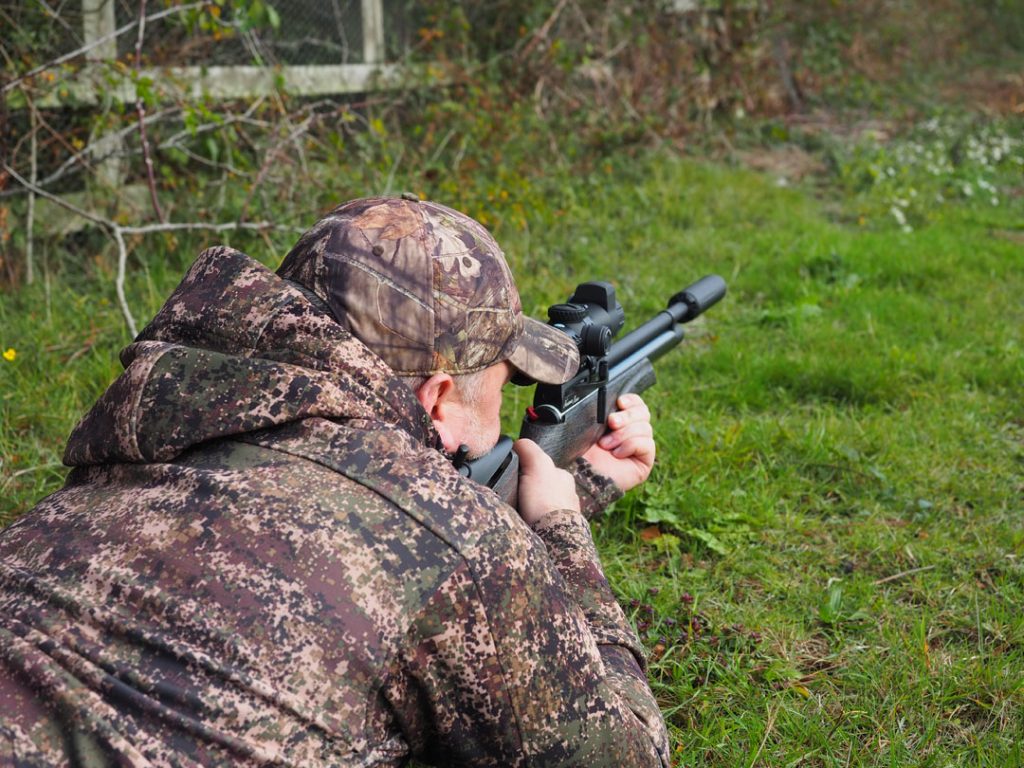
Where to aim when shooting a rabbit
Stalking rabbits is one of the purest and most satisfying challenges in airgun hunting. It’s a game of patience, stealth and observation. Start by watching from a distance. Rabbits usually follow a pattern, feeding for a few minutes before sitting upright to scan for danger.
When their heads are down, move forward a few paces. When they look up, freeze completely. Mornings with damp ground are perfect because the dew deadens sound and masks your scent. If you can close the distance quietly, you may find yourself within 30 yards, perfectly placed for a clean, ethical shot.
When you’re ready to take the shot, make sure it’s safe and within your effective range. The goal is always a humane, instant kill. A side-on head-shot placed just behind the eye is ideal, or for those who prefer a slightly larger target, a high chest shot or engine room through the lungs can also be effective at closer ranges.
Control your breathing, focus on the reticle and squeeze the trigger gently. The stillness that follows a perfect shot is one of the great satisfactions of rabbit shooting.
Rabbit shooting techniques
There will be times when stalking simply isn’t practical, especially in open fields where there’s little cover. This is when prone shooting comes into its own.
By lying flat, you reduce your silhouette and gain a rock-steady platform for accurate shooting. Choose a known feeding area, get into position downwind and settle in.
A lightweight mat will keep you comfortable and dry, while a bipod or shooting bag will provide the stability you need for precise shooting. Prone shooting is perfect for modern PCP air rifles as it allows for quick, quiet reloading without giving away your position.
When you’re comfortable and ready, watch for movement at the edges of the field. Often you’ll spot a flick of an ear or the glint of an eye before the rest of the rabbit appears.
Shooting rabbits from a hide
Hide shooting is another excellent method when rabbits are wary or the wind isn’t in your favour. Setting up a hide allows you to let the rabbits come to you.
Position yourself downwind of a known feeding spot or along a run that rabbits regularly use. You don’t need an elaborate setup; a simple net hide, a pop-up blind or even sitting against a hedge with good natural cover can work perfectly.
Patience is key. Once you’re settled, stay still and quiet. As dusk approaches, rabbits will begin to emerge cautiously, often stopping to check for movement.
Wait for a clear, broadside shot before squeezing the trigger. Shooting from a hide reduces disturbance on your permission and allows you to make consistent, repeatable results night after night.
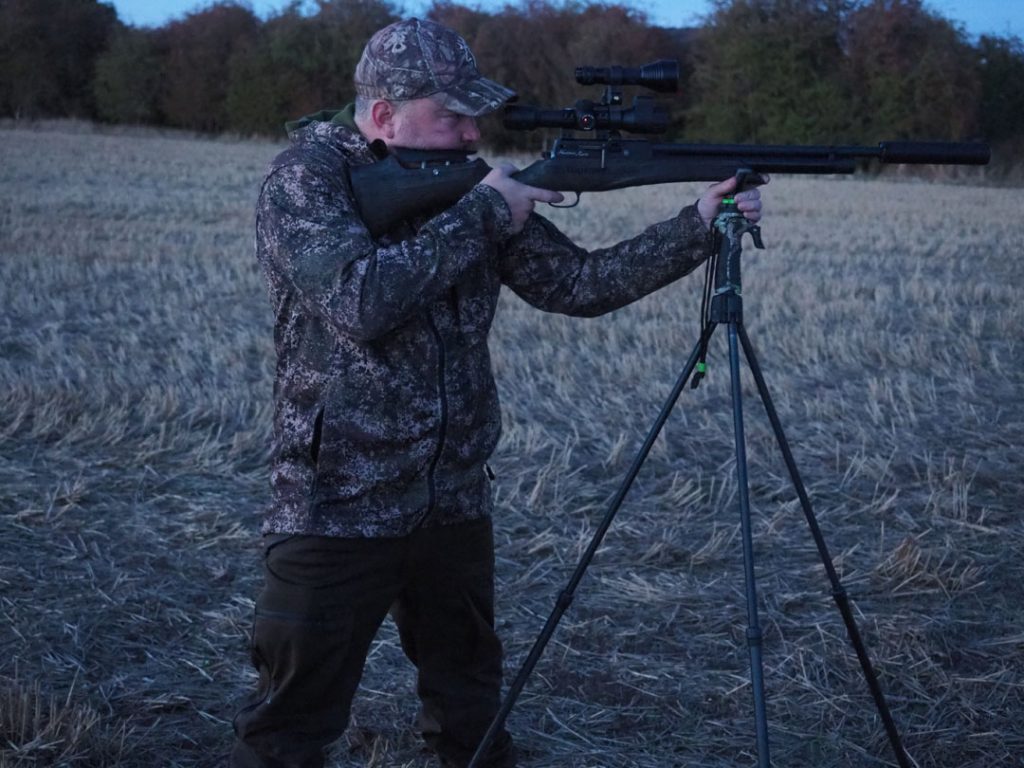
How to shoot rabbits at night
When night falls, lamping or night vision transforms rabbiting entirely. If lamping is allowed, use a purpose-built hunting lamp with an adjustable beam and a soft red filter to reduce alarm. Move the beam gently across the field, looking for the distinctive reflection of a rabbit’s eyes.
Once you’ve spotted one, approach carefully, keeping the light just above the rabbit until you’re ready to take the shot. Too much direct light too soon will send it bolting.
With night-vision/ infrared torch, the process is even smoother; you can observe and shoot without giving away your presence.
Dedicated night-vision scopes or clip-on devices are highly effective but require careful setup and awareness of safety at all times. Shooting in the dark demands total certainty about your target and what lies beyond it.
When is the best time of year to shoot rabbits?
The time of year also plays a big role in your success. Spring and early summer are peak breeding seasons, when numbers are high and young rabbits start to appear. They can be easier to approach but are smaller targets, so precision matters.
Late summer and autumn bring mature rabbits feeding heavily to build reserves for winter, and they tend to follow more predictable routines.
Winter rabbiting is challenging but often rewarding less vegetation means better visibility, and rabbits feed longer in open areas when food is scarce. Each season offers something different, and learning those seasonal rhythms will greatly improve your results.
Big bags don’t come from luck, they come from knowledge and consistency. Scout your permission regularly and make notes of where rabbits feed and when. Rotate your hunting spots to prevent over-pressuring one area and keep disturbance to a minimum. A quiet, steady approach ensures that rabbits remain comfortable and continue their usual routines.
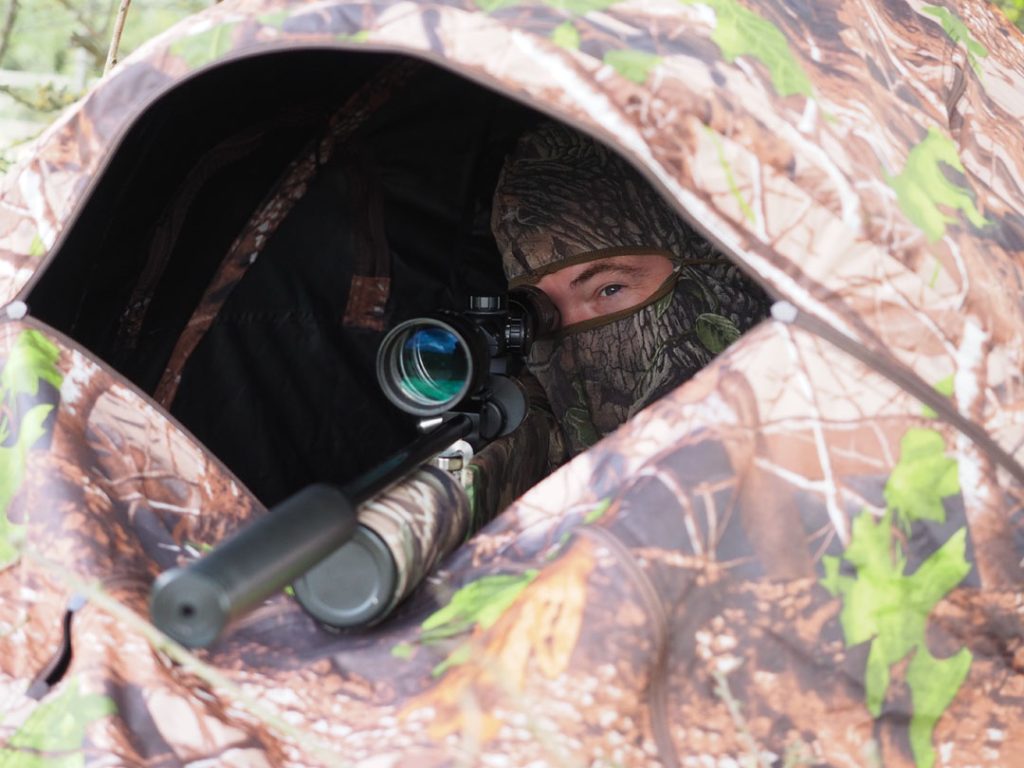
What equipment is needed for rabbit shooting?
Make sure your rifle is zeroed properly 30 yards is a good all-round distance and that your chosen pellet and rifle combination produce consistent reliable accuracy. Being organised helps: carry spare magazines, a rangefinder, a game bag and a small knife for field dressing. When everything is ready and within reach, you can stay focused on the hunt rather than fumbling for gear.
In the end, rabbiting with an airgun is about far more than pulling the trigger. It’s about the connection between hunter, land and quarry. Whether you’re creeping through the half-light of dawn, lying low in the grass, or scanning a moonlit field through your scope, there’s something timeless and deeply satisfying about it. It teaches patience, observation and respect for nature.
Learn your land, respect your permissions and take pride in doing things the right way. The rabbits will always challenge you, that’s what makes them such a worthy quarry, but with skill, understanding and a bit of quiet determination, you’ll find that success is inevitable.
Rabbit hunting with an airgun remains one of the most rewarding and traditional branches of the sport, and when it is done properly, it represents everything that is good about shooting: respect, responsibility and the satisfaction of a job done well with organic meat for the freezer.
How long can you leave a rabbit before gutting it?
After taking a rabbit, it’s best to collect it as soon as it’s safe to do so. Leaving it too long risks spoilage, particularly in warmer months when body heat quickly taints the meat.
Always check if the rabbit is dead before handling. I use a game bag to carry my rabbits. It keeps them clean, ventilated and easy to manage in the field.
Avoid stacking warm carcasses together, as this affects flavour and texture. Once home, I always gut and skin the quarry straight away to ensure the best meat quality and show respect for the animal.

